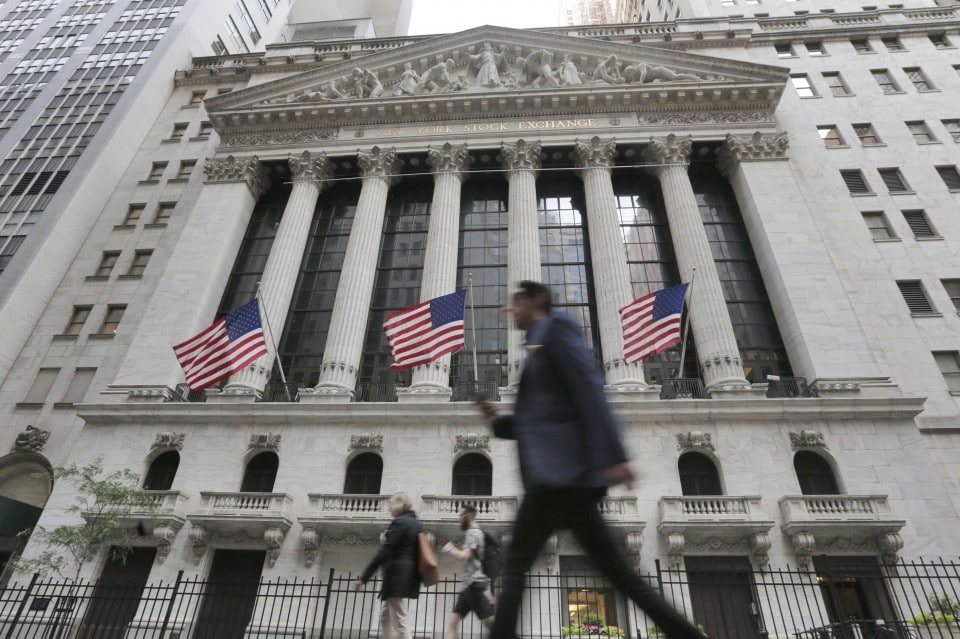Tim Lee is the founder of financial economic consultancy firm pi Economics.
The next financial crisis is closer than most people think. We have already seen the warning signs, with the current U.S. stock market plunge, its plunge in February and the Turkish lira crash in August. While these two events appear unrelated, they both involve a risky practice, known as “carry trade,” that could unravel and trigger the next crash.
Carry trading is a financial activity that involves borrowing at low-interest rates to finance higher-yield investments in markets assumed to be relatively stable. In the years following the global financial crisis, for example, Turkish businesses practiced a form of currency carry trade. They leveraged themselves heavily using low-interest U.S. dollars to finance investments in the high-interest lira in Turkey’s rapidly-growing economy. This brought capital into Turkey, which supported the lira. But too much credit growth in Turkey and the consequently large trade deficit meant this practice became unsustainable; the lira crashed and Turkish businesses were left with dollar debt that they could not easily service.
There are many other types of carry trades — in credit markets, the housing market and even the corporate sector and the stock market. In the United Kingdom, the popular “buy-to-let” schemes are a form of carry trade in the housing market, in which people buy properties on lower interest rate mortgages to make profits from high rents, assuming that the housing market will rise or remain stable. Profits will be made, as long as the housing market does not crash.
The instruments that “blew up” when the U.S. stock market corrected in February were equivalent to carry trades. Some might also call it “volatility trading,” but they were in essence leveraged bets that the Standard & Poor’s 500-stock index would remain relatively stable. On Feb. 5, however, it nosedived in what was the biggest one-day point drop in history.
The reason why carry trades are dangerous is that while they increase financial liquidity when they are growing, they create the basis for their own demise. As the U.S. and Turkish examples show, carry trades periodically crash when leverage becomes excessive and there is a forced unwinding of borrowing, which becomes self-reinforcing.
The evidence suggests that carry trades have ballooned since the global financial crisis. The Bank for International Settlements estimates that U.S. dollar lending to non-banks outside the United States has jumped from 9.5 percent of global GDP at the end of 2007 to 14 percent by the first quarter of this year. This is not an exact measure of the carry trade, but it suggests that, as in Turkey, businesses around the world have tended to borrow heavily in U.S. dollars. We can guess that when financial volatility is low — as it has been over recent years — all the various types of carry trades will be growing in scale.
When carry trades increase, financial liquidity rises in tandem. This, in turn, suppresses financial volatility and yield spreads while driving up asset prices, leading to an increase in apparent wealth and a rise in consumer spending. Recent Federal Reserve data indicates that U.S. personal wealth has soared to as high as 524 percent of GDP, far above the post-war average of 387 percent.
Why has the global carry trade been growing? Part of it has to do with the growth of global finance, which, for example, has opened up greater opportunities for businesses around the world to borrow overseas or to make use of more sophisticated financial instruments and structures. But there has been a supercharging effect from central bank policies.
Central banks’ balance sheets are in themselves a giant carry trade — central banks have liabilities with low- or zero-interest rates, such as cash currency, and have bought bonds in large quantities since the financial crisis. Their balance sheets have expanded enormously as a result; the balance sheets of the Federal Reserve, the European System of Central Banks and Bank of Japan have all grown four-to-five times in size since 2006. Paradoxically, the main legacy of the financial crisis has been that the apparent success of central banks in rescuing the financial system from the crisis has given financial speculators and businesses even greater confidence, encouraging them to use greater leverage.
The Fed is now contracting its balance sheet and raising interest rates, while other central banks’ balance sheets are not growing nearly as quickly as they were. It is evident that global liquidity is already tightening. The currencies of countries that have traditionally had higher interest rates, such as the Australian dollar and various emerging economy currencies, have been depreciating. This suggests that carry trades are coming under pressure.
As carry trades unravel — or as they become “loss-making” as financial volatility begins to increase — liquidity in the financial markets will begin to disappear. This will increase pressure on other carry trades, creating a vicious circle. Yields on riskier bonds will rise sharply, placing renewed stress on peripheral Eurozone economies and emerging economies. Less credit-worthy businesses and institutions that have short-term liabilities will face severe problems refinancing.
We will likely reach a “tipping point” when financial asset prices crash, hitting hard the economies that have become overly dependent on increasing financial wealth. That is why we must be alert to the dangers of carry trades, and central banks should implement policies in a way that does not encourage them. Carry trades are a worldwide phenomenon, and their unraveling could trigger the next global crisis.
This article has been updated to mention the recent U.S. stock market dive. It was produced by The WorldPost, a partnership of the Berggruen Institute and The Washington Post.




